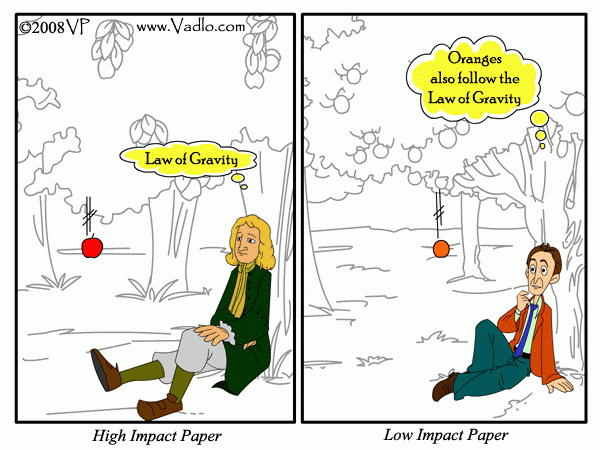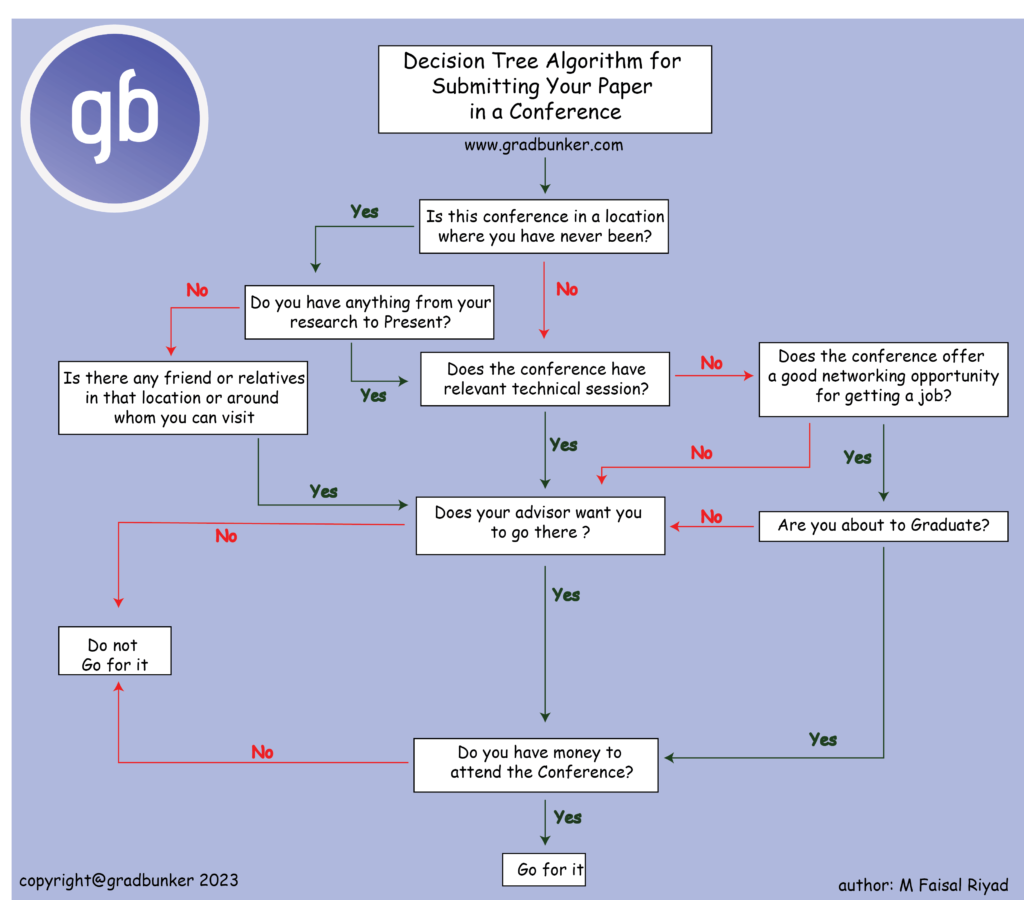Publishing an article in academic journal or even in conference can be a daunting process, if you are doing it for the first time. Moreover, it demands substantial commitment of time and hard work to develop your hypothesis and support your thesis statement with a solid analytical model and substantiate it by the experimental results. Though it is quite acceptable that, a graduate student will publish research paper in journals or conferences; there are a significant amount of unique works which are being done by undergraduate students remain unpublished, unless they work with some research group as a student researcher.
Why should you publish your undergrad thesis?:
Rather saying why should you publish your thesis, i must say why should you do quality work so that you can publish it. If you do not publish your work, none will acknowledge your effort. That is the sad part of academia. But, that does not mean that you will publish your work in any predatory journals or conferences. If you are aiming for higher studies some good schools, then your publication will bolster your profile. Professors always want to hire bonafide researcher. A published work will always put you miles ahead among all other applicants.
Journal or Conference — where to Publish Your Research Paper?:
As a undergrad student researcher it is quite difficult to decide where to publish paper. Therefore, it is suggested you seek expert opinion e.g. from your thesis supervisor. However, if you do noble work, you can submit your findings in well reputed journal in your field. Based upon the quality of work you might choose to publish your research paper either in journal or any well reputed conference. But, be noted that, people value those publications which are peer reviewed. If you want to publish your work in any peer reviewed journal, you must consider three preliminary factors —
- Scope of the Journal
- No of Issue per year
- Impact Factor

Target an Appropriate Journal:
You might be tempted to submit your article to one of the top journals in your field. After all, you and your supervisor have seen that those journals were referenced over and over again in the literature that you been through. Generally, it is exceedingly competitive to publish research paper in big journal. The articles that are published in search journals are based upon groundbreaking studies of great significance, and many of them rely on the scholarship of multiple authors. So, if you think that you have found something noble, then you might opt in for submitting your work in big journal. If not you might think of publishing your work in conferences or in some case you might consider submitting your article to a student oriented journal.
The most common but avertable reason for journal rejection is mismatch between the manuscript and the journal aims and scope. Therefore, you must determine whether the subject matter of your research article matches the scope of the targeted journal. Consider the sort of research that the journal focuses on. Is it theoretical or applied? Is the range of articles sought by the journal broad-based or very narrow in focus?

Within a specific discipline e.g. Material Science, journals may focus only on particular aspect of that subject. For example, Advanced Materials and Advance Energy Materials — both are reputed journals but focus on different aspects of the same subject. Advanced Materials covers It includes Communications, Reviews, and Feature Articles on topics in chemistry, physics, nanotechnology, ceramics, metallurgy, and bio-materials. Advanced Energy Materials is a peer-reviewed scientific journal covering energy-related research, including photovoltaics, batteries, super-capacitors, fuel cells, hydrogen technologies, thermoelectrics, photo-catalysis, solar power technologies, magnetic refrigeration, and piezoelectric materials.
Finally, make sure that your target journal publishes the article type you intend to submit. For example, if your paper is a case study, check that the journal publishes case reports. If the submitted article does not match with the types of articles that the journal publish, will lead to 100% rejection of your manuscript.
Turn-around Time of the Journal:
“How many issues does the journal publish in a year?” This is the next question that you should ask yourself. As a newbie you might want to publish research paper from your work as early as possible. Therefore, you must know about the number of issues that a journal publishes every year. A monthly journal is much more likely to review your article quickly compared with a journal that only publishes twice a year. Some journals list the date submitted and date accepted. You can deduce an approximate idea about the turnaround time by comparing these dates.
You should also check whether the journal has an online edition. Does your articles get posted online there once approved for publication? If so, it means that your article be on live soon after it is accepted, even if it appears in print much later. For those who wants a whirlwind publication, open access is the best option for them.
Impact Factor of a Journal:
Impact Factors (IF) are a benchmark of journal’s reputation. It reflects how frequently peer-reviewed journals are cited by other researchers in a particular year. Just average the number of times that a journal’s article are cited over the past 2 years — you will be able to find the value of it. For example,
A) Calculation of yearly impact factor based on three year period.
1. X=Total cites in 2009
2. Y= 2009 cites to articles published in 2007–08 (This is subset of X)
3. Z= Number of articles published in 2007–08
4. IF=Y/Z=2009 impact factor
Actual Calculation of impact factor in 2009
Cites in 2009 to articles published in:
2008 = 456
2007 = 468
Total = 924
Number of articles published in:
2008 = 80
2007 = 74
Total = 154
Impact factor = cites to recent articles/number of recent articles = 924/154=6.0
B) Calculation of five year impact factor
1. X= Citations in 2011 over the 2006–2010
2. Y= Articles published over the years 2006–2010
3. Z= X/Y = Five year impact factor (Source: Web of Knowledge)

IF varies significantly among discipline, field, and topics; hence, you should keep in mind that it is something better than nothing. So having impact factor 1 is always better than having no impact factor. The higher the IF of the Journal that you are intending to submit, if published, the more citations you will get. So choose carefully, but do not overshoot.
Should you Publish your 1st Paper in Conference?:
A bird in the hand is always better than the two on the tree. Getting a paper published in a journal is time consuming and you might end up being rejected. The process may not be done by the time you start applying for PhD/MS programs.
None considers it bad to publish a conference paper. And nobody expects you to release in a top journal of your subject if it is your first article. A conference that is supported by the major society (IEEE, ASME) is generally a safe bet to publish. Additionally, academics are, in general, quite aware of the limitations of students in different levels of their education. They don’t demand from you that you will have the knowledge or skills of a professor, instead they will consider you as an amazing student who is presenting a nice work. Conferences tend to be casual and friendly, and you will have people approach you more to help you than criticize you.

If you submit your work to an international conference, it is a great opportunity to meet academics around and ask them about the possibilities for your future before you start applying for PhD. Conference is a great place to network with prominent professors from your field and seek for potential PhD opportunities.
However, you can always extend your conference work into journals. It is a common strategy in lots of fields to publish preliminary results or “half papers” in conferences and then extend them to a journal article.
Conclusion:
It is always better to have something published than nothing — especially when you are applying for PhD or Masters. Meticulously selecting the journal to which to submit your manuscript greatly reduces the chances of rejection your work. If you plan to submit it to a conference make sure it is not a predatory conference at all, as well it applies same to the journal. Once you have taken the decision, read the instructions about the article format, word count, citation styles, photograph specifications, publication costs, etc — which will aid you to make a final decision.
Disclaimer: No A.I. was used to generate any portion of this content.


Pingback: How to Identify Predatory Conferences? - gradbunker.com
Pingback: How to Use Proper Manuscript Language for Scientific Article? - gradbunker.com